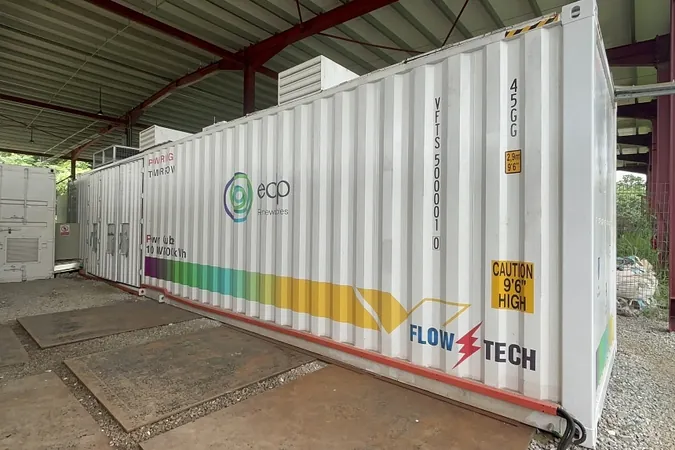
Unlocking the Green Chemistry Revolution: How Pharma Companies Can Change the Game
2024-10-30
Author: Daniel
Unlocking the Green Chemistry Revolution: How Pharma Companies Can Change the Game
In the ever-evolving landscape of pharmaceutical development, "green" or "sustainable" chemistry is no longer just a buzzword—it's a movement that has been gaining momentum since the 1990s. Rooted in twelve foundational principles, this revolutionary approach aims to minimize waste, enhance energy efficiency, and harness renewable resources, thereby offering pharmaceutical companies a significant opportunity to reduce their environmental footprint. Here’s how the industry is embracing these eco-friendly practices and the challenges that lie ahead.
Transforming Processes for a Greener Tomorrow
By prioritizing the reduction of hazardous chemicals and solvents, pharmaceutical companies can drastically lessen their environmental impact. Major players like AstraZeneca are at the forefront of this shift, implementing sustainable catalysts that not only facilitate chemical reactions more efficiently but also limit dependence on harmful substances. These catalysts accelerate the creation of active pharmaceutical ingredients, reducing the number of steps in the synthesis process and potentially cutting down on toxic waste.
Take, for example, the innovative practices of the German start-up Dude Chem. Their ability to recover costly chiral catalysts and conduct reactions in water instead of organic solvents has led to a staggering 82% decrease in catalyst costs. This kind of ingenuity highlights the immense possibilities within green chemistry to overhaul traditional manufacturing processes.
The emergence of groundbreaking technologies—such as continuous reactions, enzyme catalysis, and synthetic biology—foreshadows a transformative future for the production of pharmaceuticals. AstraZeneca is leveraging artificial intelligence (AI) to navigate this terrain, enabling the analysis of massive datasets to uncover trends, predict reactions, and refine conditions for optimal results. This digital prowess not only boosts efficiency but also aligns with sustainability goals by minimizing waste and energy use.
The Challenges Ahead: A Knowledge Gap
Despite promising advancements, a significant barrier remains: a pervasive lack of investment in the necessary expertise and technology to effectively implement green chemistry. Many companies still grapple with limited resources and insufficient knowledge, hindering their ability to assess the environmental impacts of their products from the outset.
As the demand for sustainable practices rises among consumers and regulators alike, pharmaceutical firms must confront this challenge head-on. They need to invest in training and development programs to equip their teams with the skills required for adopting environmentally responsible methodologies.
The stakes couldn't be higher. The pharmaceutical sector is under increasing scrutiny regarding its environmental stewardship, and embracing green chemistry isn't just a trend—it's a pathway to ensuring a safe, sustainable future for all. As the industry stands at this pivotal crossroads, the questions remain: Will they rise to the occasion, or will they fall behind in the green revolution? The choice is clear, and the clock is ticking.





 Brasil (PT)
Brasil (PT)
 Canada (EN)
Canada (EN)
 Chile (ES)
Chile (ES)
 España (ES)
España (ES)
 France (FR)
France (FR)
 Hong Kong (EN)
Hong Kong (EN)
 Italia (IT)
Italia (IT)
 日本 (JA)
日本 (JA)
 Magyarország (HU)
Magyarország (HU)
 Norge (NO)
Norge (NO)
 Polska (PL)
Polska (PL)
 Schweiz (DE)
Schweiz (DE)
 Singapore (EN)
Singapore (EN)
 Sverige (SV)
Sverige (SV)
 Suomi (FI)
Suomi (FI)
 Türkiye (TR)
Türkiye (TR)